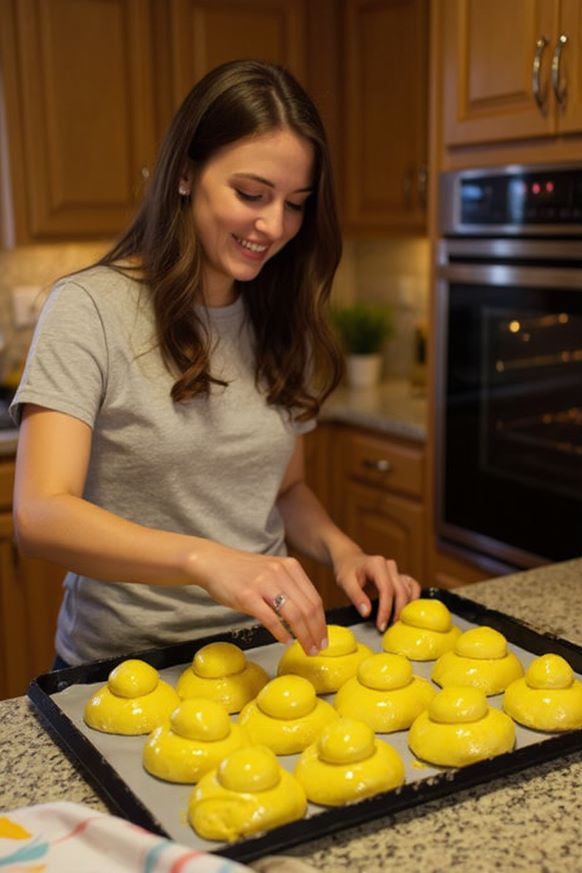Ingredients
Equipment
Instructions
- Activate the Yeast: Warm the milk (not hot, ~35°C / 95°F). Dissolve yeast and honey in it. Let it sit for 10 minutes until foamy.
- Make the Dough: In the stand mixer bowl, combine flour, sugar, citrus zest, and vanilla. Add eggs and yolk, then start mixing on low speed.Slowly add the milk/yeast mixture.Mix until the dough starts forming.Add softened butter in pieces, one at a time. Let each incorporate.Add the salt last and continue kneading until smooth and elastic (10–15 min total).
- Dough should be soft, slightly sticky, and elastic. Do the “windowpane test” to check gluten development.
- First Rise: Shape the dough into a ball, place it in a lightly oiled bowl.Cover and let rise in a warm spot until doubled — about 2–3 hours.
- Shape the Brioches: Shape the Brioches: Divide the dough into 12 large pieces, cut 80g for the base and 20g for topsSet aside 12 small top pieces Shape the large pieces into smooth balls. Place them on parchment-lined trays, spaced apart.Shape the small “tuppo." (top knots) into little balls.Press your finger into the top center of each larger bun and gently place the tuppo side half tucked inside.
- Second Rise: Cover loosely and let rise again for 1.5–2 hours, until noticeably puffy.
- Egg Wash & Bake: Preheat oven to 180°C (350°F). Mix egg yolk and milk. Brush each brioche gently.Bake for 20–25 minutes, or until golden brown and hollow-sounding when tapped.
- Cool: Cool on wire racks. Enjoy warm or room temperature.
Notes
Use a stand mixer: Brioche dough is quite sticky and enriched, so a mixer with a dough hook makes kneading much easier and helps develop the dough’s elasticity. If kneading by hand, be prepared for a bit of a workout!
Room temperature ingredients: Make sure your eggs, milk, and butter are at room temperature before mixing. This helps the dough come together smoothly and rise properly.
Be patient with rising times: Brioche dough needs time to develop flavor and texture. Don’t rush the first and second rises; a slow, steady rise will yield a softer, more fragrant brioche.
Check your yeast: Use fresh yeast or active dry yeast that’s not expired for the best rise. If you see no bubbles or foam after activating your yeast in warm milk, it might be time to get new yeast.
Shaping the tuppo: When shaping the top knot (“tuppo”), keep the smaller dough ball smooth and gently press it onto the larger brioche base. This classic shape is what makes these brioches unique and charming.
Baking: Keep an eye on your brioches as oven temperatures can vary. They’re done when golden brown and sound hollow when tapped underneath.
